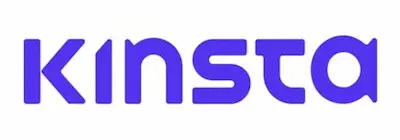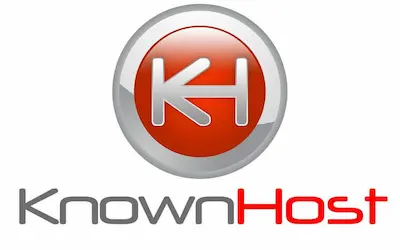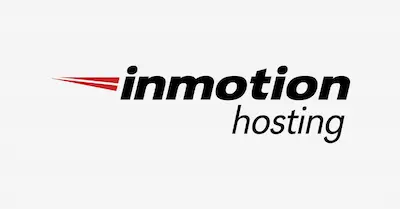Low TTFB times are a good judge of hosting. Towards May 2020, Google updated one of its metrics to judge page speed. This new metric called Largest Contentful Paint or LCP is the time it takes for the page to render the most prominent visible element. According to Google, optimizing LCP is crucial to getting a good page speed score. And the key to getting a good LCP score is a TTFB metric.
Here are the three web hosts I recommend for the best TTFB hosting.
1. NameHero 9.9
NameHero uses a LiteSpeed webserver with inbuilt server-side caching and high-quality servers to achieve low TTFB times. It also has free backups, malware scanning and fixing, and NVMe drives. It’s the best on this list.
- LiteSpeed webserver
- Server-side caching
- Free daily backups
- Free malware fixing
- NVMe drives
- Free domain name
SSD Drives
Offsite Backups
Server-Side Caching
cPanel Dashboard

2. Kinsta
- 14-30 days of backups
- “Hack-fix” guarantee
- Guaranteed performance
- Performance monitoring
- Global data centers
- Customized architecture

3. KnownHost
- Two days of free backups
- LiteSpeed webserver
- Native server-side caching
- Free malware scanning and fixing
- OPcode enabled caching
- Free domain privacy

4. InMotion Hosting (Power Plan)
- NGINX reverse-proxy
- NVMe drives
- Free domain
- 90-day money-back guarantee
- Unlimited storage
- Free firewall (WAF)

5. Liquid Web VPS
- Free Acronis backups
- Cheap Cloudflare Pro add-on
- Massive two-year discount
- 100% uptime SLA
- Windows hosting available
- High bandwidth limits
I managed to achieve an LCP of 1.9 seconds using a combination of good hosting and best practices, as shown here:

While there are many things you can do to improve your LCP score, the quality of your web hosting plays a significant role by enhancing the speed at which it responds.
Table of Contents
The Importance of Quality TTFB Hosting
TTFB stands for Time to First Byte. This is the time it takes for the web host to send back the very first byte of the response. It’s the most critical metric that impacts LCP. The smaller this is, the quicker the client’s browser can start rending the page to bring the LCP to under 2.5 seconds.
If you’re working on improving your site loading speed, the most productive place to start is by reducing the TTFB. And in this, nothing matters more than your server architecture.
US-Based Servers are Best for US Customers
Having a server in the same country as your customers makes a huge difference to the TTFB. For example, if your customers are located in the United States, you must have servers in the US. Anything else is a compromise for no reason. The further away your web servers are from your customers, the longer the data has to travel back and forth. This double journey takes a massive toll on the TTFB. What’s the point of having fast servers when that speed is wasted because of the round-trip time?
The Trend of CDN Dynamic Caching
These days CDNs like Cloudflare and QUIC.cloud allow users to cache dynamic pages on their POP servers. This drastically improves the TTFB metrics for cheap hosting. For example, there are a bunch of Hostgator deals for US customers. Hostgator isn’t known for its speed, but using dynamic CDN caching, your visitors from everywhere – not just the United States – can access cached WordPress pages in a fraction of a second. It’s pretty cool!
I’ve been using dynamic caching for years. Here’s how I achieved 15ms response times by using Cloudflare to cache WordPress sites.
How Web Hosting Affects TTFB and LCP Optimization
Apart from location, a good web host can improve the LCP and TTFB via the following:
- Server-side caching (as opposed to plugin caching)
- Faster database queries
- Generous CPU allocation
- Low-density servers
- Modern web standards like QUIC, Server Push, etc
Keeping all this in mind, here are my recommendations for the best web hosts for LCP optimization.
1. NameHero Hosting: Thanks to LiteSpeed
NameHero is quickly making a name for itself among savvy customers due to its features and prices. Compared to the other recommendations below, NameHero is a lot cheaper. Here are the features that make it ideal for optimizing TTFB and LCP times:
- LiteSpeed servers (What is LiteSpeed?)
- Server caching
- MariaDB instead of MySQL databases
- NVMe SSD drives (For faster database operations)
- SSD Raid 10 Storage
You can read my complete NameHero review to find out more. I’ve contacted the CEO of NameHero Ryan Gray, and he’s provided me with a 85% discount on their shared hosting plans with the following coupon:
So NameHero is my #1 recommendation.
2. Kinsta (for WordPress Hosting)
Kinsta is another “premium” hosting company – though not nearly as expensive as Liquid Web. They specialize in WordPress hosting along with others like WP-Engine.
Kinsta lowers its TTFB times by giving your sites a virtual container where you don’t share resources with anyone else. Unlike regular shared hosting, where every account is competing for the same CPU resources, Kinsta allots you a dedicated space that’s all your own. So you not only get very high speeds, but it’s also consistent since your server doesn’t depend on other people for its performance. This means that you’ll continue to get optimized LCP times over a long period, which helps with verifying the speed on the Google Search Console. Here’s my complete Kinsta review, along with pricing.
Here’s the best offer for Kinsta right now:
Kinsta’s Starter plan allows only one WordPress install, and the “Pro” plan allows two. So if you don’t mind the relatively high price, and are content with hosting just one or two WordPress sites, then Kinsta is an excellent option for reducing your TTFB and LCP timings.
3. KnownHost: Great LiteSpeed Response Times
Like NameHero above, KnownHost also uses the LiteSpeed webserver. KnownHost is more expensive than NameHero, though, with prices starting at $3.47/m, though not by much. Here are all the KnownHost promo codes to get the latest deals. It also has lower resource limits. But it offers two days of backups instead of one and free domain privacy for all domains registered with them.
This is the best InMotion coupon for shared hosting:
Here’s the complete KnownHost review, where I examine its strengths and weaknesses in much greater detail.
4. InMotion Hosting: NGINX Reverse-Proxy
InMotion achieves low TTFB times using an NGINX reverse proxy, advanced caching, and NVMe drives. Unfortunately, this is only available on the “Power” plan costing $4.99/m. Here’s the InMotion hosting coupon code page with all of their deals. Here’s the best InMotion discount you can get right now:
InMotion also uses NVMe drives instead of SSDs, further lowering response times. With unlimited storage and low-density servers, you can’t go wrong with InMotion hosting at a reasonable price.
5. Liquid Web: Amazing Server Quality
Liquid Web is best known in the industry for its first-class infrastructure. The thing is, it’s expensive. Their cloud sites package starts at $51/m and is meant for people who want to host multiple sites on a single account. Short of that, they don’t have “ordinary” web hosting as is usually understood. They exited that business in 2016 and haven’t looked back since.
However, their VPS servers are not that expensive. Especially the entry-level servers are comparable to others in the industry. Here’s a complete list of Liquidweb prom codes. If you want a top-of-the-line host that will give you the absolute lowest TTFB for maximum LCP optimization, then Liquid Web is your best bet.
Why I Left Out SiteGround
For various reasons, I no longer recommend SiteGround on WP-Tweaks. One of them is that they abandoned cPanel and introduced their own dashboard while other cheaper hosts continue to provide it. Another is that SiteGround’s renewal prices are so much higher than their initial discount that it’s almost misleading. The Internet is full of SiteGround customers who have just received their first “full” bill and express shock at how high it is.
For these reasons, I have switched my recommendation from SiteGround to NameHero. Among other things, NameHero also provides offsite backups and super cheap integration with DropMySite if you’re looking for additional security. SiteGround’s backup system is impressive, but they don’t store the backups offsite, and their integration with Blogvault starts at $7/m for just one site. That’s extremely expensive!
So while I love SiteGround’s features, a few problems prevent me from recommending them as wholeheartedly as before.
Good Web Hosting Isn’t Enough if you Have Lots of Ads
Unfortunately, having great web hosting won’t help you if your site is full of ads. For example, even with the best optimization and hosting, ad marketplaces like Ezoic will slow down your site, tanking your page speed and Core Web Vital (CWV) metrics. For many people, display ads are the main method to monetize their sites, so they may have no choice. But know that web hosting can only go so far!
Final Thoughts on Good TTFB Hosting
Optimizing your LCP to drop below 2.5 seconds is no easy task, and it will require a lot of work on your main site, deferring render-blocking JS and CSS, pushing out resources faster, and a lot more. But your web host also plays a significant role. The quicker your server is, the faster it can respond to requests and reduce that all-important TTFB metric, directly impacting LCP.
Any of the hosts mentioned above is excellent for reducing TTFB and LCP times. I hope you found this a helpful list!



First article without Cloudways in top.
Great to see other Top hostings
namehero have bad TTFB, Average TTFB only 620 ms
tested from speedvitals
https://app.speedvitals.com/ttfb-test?url=https://www.namehero.com/web-hosting